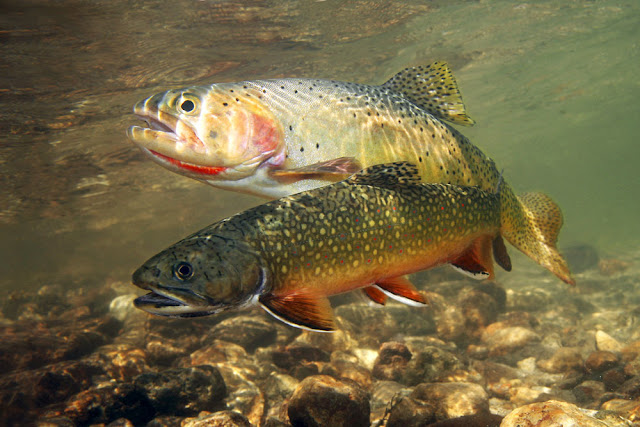Many fishermen have aspirations to catch themselves a good sized trout in a river by fly fishing. The relaxation and the slightly cool breeze call to them and it is hard to resist. Although you may have these aspirations, it does not always mean you will be lucky with your catch. River trout fishing can be difficult. It is a good idea to exercise these few tips when you are on your mission to bring home a nice trout dinner.
When you are going river trout fishing, you should start out with a “double taper dry line”. It is the kind of fly fishing line that is easiest for beginners to use because the stiffer line will glide through the rod with greater ease and will not get tangled as easily. The most important thing to focus on when river trout fishing is your back cast. It is the basis of a good cast and it is the thing that provides the platform for shooting forward again. Do not over cast but give ample time for all of the line to go out behind you completely. Take into consideration the type of cast that will be most appropriate for you to use during windy conditions. Sometimes when it is too windy the line will hit the rod. You can try using roll casting. It is a valuable technique for trout fishing and can be used if the wind is too hostile making it difficult for a good back cast. Roll casting calls for tilting the rod slightly from the body. Lift your hand in order to bring the rod tip to the one o’clock position while keeping the line behind the rod in order to form an arc behind the rod. You then force the rod sharply in a forward and backward direction, accelerating to the 9:30 position then stop suddenly. The forward motion will roll the line forward and then straighten it. If the line does not straighten completely you can try applying a little more power on the cast again and make sure that the belly of the line is behind the rod, making it moving downward, not straight out.
Another cast that can be tried in river trout fishing is a false cast. This casting method is used to change the directions of the cast. This is done by using a combination of a pickup and lay-down cast without allowing the line hit the water. With any casting method you prefer or works for you, it is possible to be faced with a few problems. One way to avoid problems is to frequently clean your fishing line. Lines that are dirty with such things like algae are less easy to cast with. After you put the time into cleaning your line, dress it to keep it nice and so it will be smooth for easier casting. Dressing your line over time will also improve the floatability of the line which will help with roll casts. Always be sure that the rod tip is along a straight line and that you are not being too hasty in your casting. Being hasty in your cast can create line clutter at the end of the cast. Make sure that you allow the line to go only after the rod turns to the 10 o’clock position.

No comments:
Post a Comment